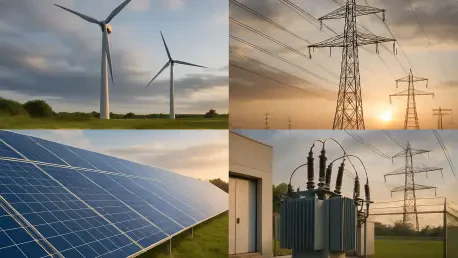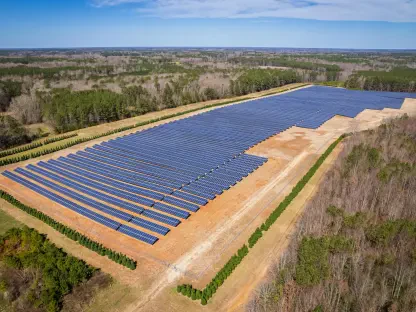As global energy systems pivot toward renewable sources, a staggering challenge looms: over 50% of electricity from solar and wind remains intermittent, threatening grid stability. Battery Energy Storage Systems (BESS) have emerged as a pivotal solution, capturing excess energy and dispatching it on demand to bridge the gap between variable supply and consistent need. This market analysis delves into the transformative role of BESS in ensuring grid reliability, examining current trends, data-driven insights, and future projections. With renewables projected to dominate energy portfolios, understanding the dynamics of BESS adoption, technological advancements, and market barriers becomes essential for stakeholders aiming to navigate this evolving landscape.
Market Overview: The Rising Demand for BESS Solutions
The BESS market is experiencing unprecedented growth, driven by the urgent need to stabilize grids amid rising renewable penetration. According to recent industry data, global BESS capacity has surged by over 30% annually in recent years, with utility-scale installations leading the charge in regions like North America and Asia-Pacific. This expansion reflects a broader push for decarbonization, as governments and utilities prioritize storage to mitigate the intermittency of solar and wind power. The ability of BESS to store surplus energy during low-demand periods and release it during peaks positions these systems as indispensable in modern energy frameworks.
Beyond raw capacity growth, the market is also shaped by evolving applications. From peak shaving to frequency regulation, BESS offers a suite of grid services that reduce reliance on fossil fuel backups. In high-demand markets like California, utility-scale systems are increasingly deployed to manage evening demand spikes when solar generation drops. However, the high upfront costs and limited storage durations—often capped at four hours—continue to challenge widespread adoption, underscoring the need for innovation and investment to sustain this momentum.
Current Trends: Applications and Regional Dynamics
Utility-Scale Dominance and Grid Services
A defining trend in the BESS market is the dominance of utility-scale projects, which account for a significant share of installed capacity. These large systems are critical for smoothing renewable intermittency, storing excess daytime solar energy, and supplying it during high-demand evening hours. In Texas, for instance, BESS installations have played a key role in managing grid strain during extreme weather events, reducing the need for costly “peaker” plants. Market data indicates that utility-scale BESS deployments are expected to grow at a compound annual rate of over 25% from 2025 to 2030, driven by declining battery costs and supportive policies.
Regional Variations and Infrastructure Challenges
Regional disparities heavily influence BESS market dynamics, with infrastructure readiness and renewable adoption levels shaping deployment patterns. In Australia, vast renewable-rich zones are paired with BESS to minimize transmission losses over long distances, showcasing a model for remote integration. Conversely, in the Northeast U.S., outdated transmission lines often exacerbate congestion when BESS charging adds to grid load, highlighting a critical barrier. Industry insights suggest that addressing these regional challenges requires tailored strategies, including targeted grid upgrades and localized policy incentives to balance deployment costs.
Cost Barriers and Short-Term Storage Limitations
Despite growth, cost remains a persistent hurdle in the BESS market, with upfront investments for utility-scale systems often deterring smaller players. Current lithium-ion-based systems, while effective for short-term storage of two to four hours, fall short during extended low-generation periods, limiting their reliability for sustained renewable support. Market analysis points to a pressing need for cost-effective scaling and longer-duration solutions, as these constraints impact the economic viability of BESS in competitive energy markets, pushing innovators to explore alternative approaches.
Future Projections: Innovations and Market Evolution
Technological Advancements Reshaping BESS
Looking ahead, technological innovation is set to redefine the BESS market, with long-duration storage systems emerging as a cornerstone for future growth. Systems capable of delivering 12 to 100 hours of energy are under development, addressing the critical gap in sustained renewable reliance during prolonged shortfalls. Additionally, alternative battery chemistries like sodium-ion and iron-air are gaining traction for their lower costs and reduced dependence on scarce materials, with projections estimating a potential 40% cost reduction in BESS deployment by the end of this decade.
Smart Grid Integration and Efficiency Gains
Another transformative projection lies in the integration of BESS with smart grid technologies, leveraging real-time data and automation for optimized energy management. Smart grids enable precise load balancing and predictive dispatching, enhancing the efficiency of storage systems. Market forecasts suggest that by 2030, over 60% of new BESS installations could be paired with smart grid solutions, particularly in urbanized regions with high demand variability. This synergy is expected to drive operational cost savings and improve grid resilience against sudden disruptions.
Policy and Economic Incentives as Growth Catalysts
Regulatory frameworks and economic incentives are anticipated to play a pivotal role in accelerating BESS market expansion. Streamlined interconnection processes and subsidies for long-duration storage pilots are among the measures projected to boost adoption rates. Industry projections indicate that supportive policies could increase global BESS capacity by an additional 20% by 2027, particularly in emerging markets where renewable integration is accelerating. Without such catalysts, however, market growth risks stalling amid infrastructure and funding challenges.
Strategic Reflections and Forward-Looking Insights
Reflecting on the market analysis, it becomes evident that Battery Energy Storage Systems have solidified their position as a linchpin for grid reliability during the renewable energy transition. The rapid growth in capacity, driven by utility-scale projects and regional needs, underscores their immediate value, while persistent barriers like cost and storage duration highlight areas for improvement. Technological strides in long-duration systems and smart grid integration point to a promising horizon, with projections signaling significant cost reductions and efficiency gains.
For stakeholders, the insights from this analysis suggest several actionable steps to capitalize on these trends. Utilities and developers are encouraged to prioritize investments in long-duration storage pilots to address sustained renewable shortfalls. Policymakers have a clear opportunity to align transmission planning with BESS deployment, ensuring infrastructure keeps pace with market needs. Meanwhile, businesses and energy providers can explore smaller-scale systems for localized resilience and cost savings. By fostering collaboration across technology, policy, and infrastructure domains, the industry can navigate lingering challenges and build a more robust, renewable-powered energy future.









